How to Draw Isometric From Plan and Elevation
Isometric drawing: A designer's guide
Isometric drawing is a class of 3D drawing, which is set out using 30-caste angles. It is a type of axonometric cartoon so the same scale is used for every axis, resulting in a non-distorted image. Since isometric grids are pretty easy to set, once you sympathize the basics of isometric drawing, creating a freehand isometric sketch is relatively elementary.
This post explains all you need to know near isometric drawing. Yous'll learn exactly what defines an isometric cartoon, how it differs from i-indicate perspective, what to practise to go started creating your own isometric projection, and fifty-fifty more.
Elevate your art skills farther by following the tutorials in our how to draw guide (which will teach yous how to draw pretty much annihilation), and yous can also use this roundup of the art techniques you should know about.
What is isometric drawing?
An isometric drawing is a 3D representation of an object, room, building or design on a 2nd surface. One of the defining characteristics of an isometric cartoon, compared to other types of 3D representation, is that the final image is non distorted. This is due to the fact that the foreshortening of the axes is equal. The give-and-take isometric comes from Greek to hateful 'equal mensurate'.
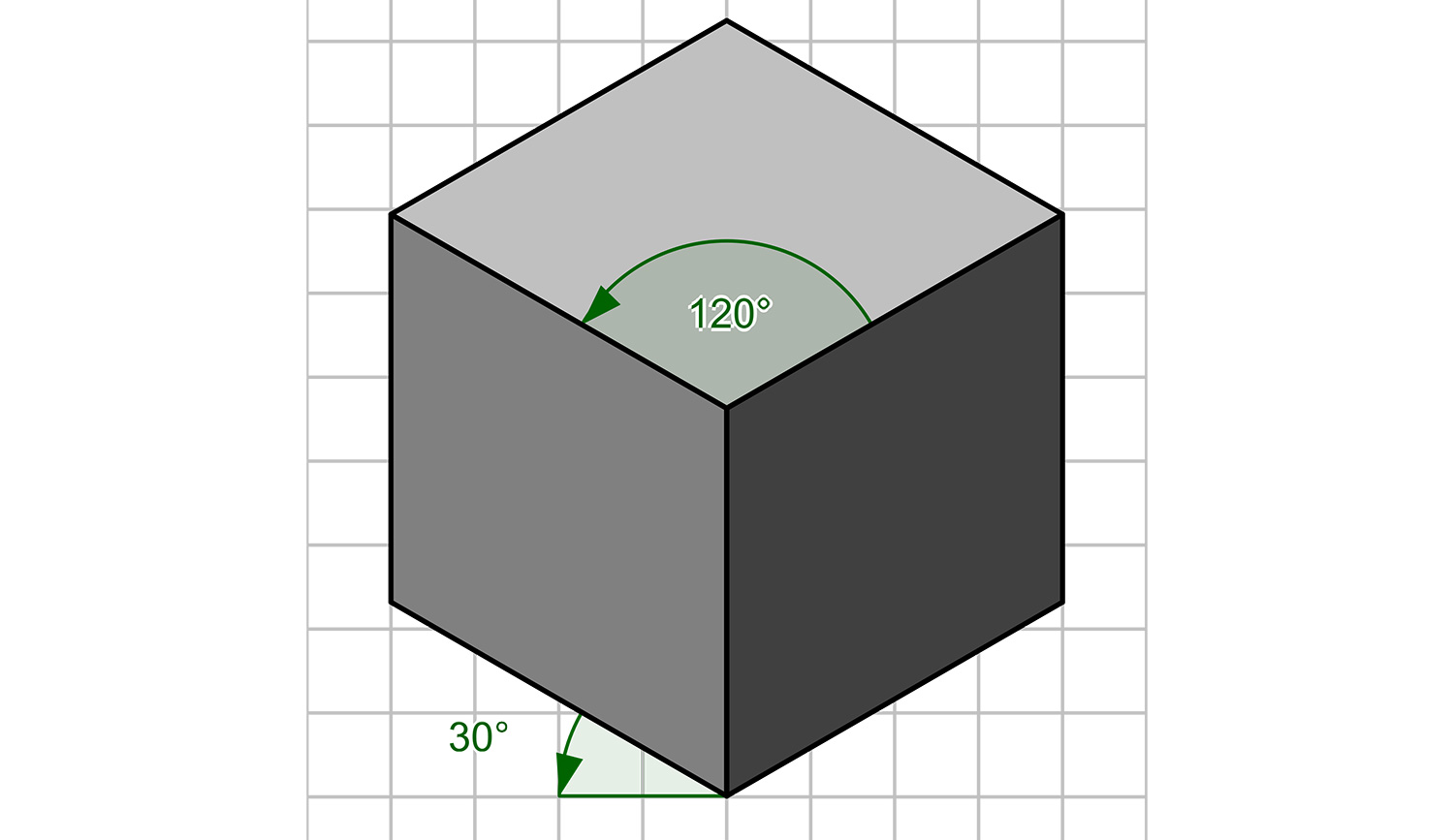
Isometric drawings differ from other types of axonometric drawing, including dimetric and trimetric projections, in which different scales are used for different axes to requite a distorted final image.
In an isometric drawing, the object appears as if it is being viewed from above from one corner, with the axes being set out from this corner indicate. Isometric drawings begin with one vertical line along which two points are defined. Any lines set out from these points should be constructed at an bending of 30 degrees.
Isometric drawing vs 1-point perspective
Both isometric drawings and one-point perspective drawings use geometry and mathematics to present 3D representations on 2D surfaces. One-point perspective drawings mimic what the man eye perceives, so objects announced smaller the further away they are from the viewer. In dissimilarity, isometric drawings use parallel project, which ways objects remain at the same size, no thing how far away they are.
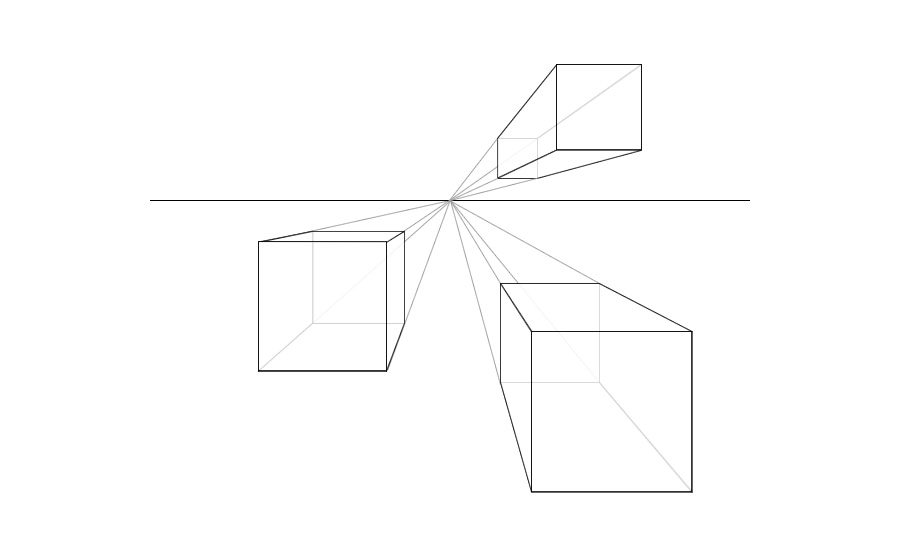
Basically, isometric drawing doesn't use perspective in its rendering (i.e. lines don't converge every bit they move away from the viewer). Isometric drawings are more useful for functional drawings that are used to explicate how something works, while one-point perspective drawings are typically used to give a more than sensory thought of an object or infinite.
How to describe an isometric cube
Cartoon a cube using isometric projection is very piece of cake. Y'all volition need a piece of newspaper, ruler, pencil and protractor (or for the shortcut version, using gridded newspaper, jump to the adjacent section).
Using the ruler, depict a vertical line on the page, and mark three equally spaced points along it. Draw a horizontal line through the everyman point, and using the protractor, mark out a 30 caste bending up from the line on either side. Describe a line dorsum through the lowest indicate from the xxx caste angle on each side.
Repeat this step through the middle point and the same through the superlative point, only with the elevation betoken, marking out the bending down. The lines from the second and third point will cross at a certain point, and from this intersection, draw a vertical line down towards the angled lines coming from the bottom point. You should be able to see the form of the cube where all of the lines intersect.
Using an isometric grid
For all the cheats out there who don't have the necessary tools (or inclination) to create an isometric projection, there is a foolproof mode to fustigate out your axonometric drawing: simply use an isometric grid. The pattern tin can be downloaded online, and will save you lots of time and endeavor.
Alternatively, learn how to set upward your ain grid in Illustrator by following the video tutorial below.
Once your eyes go accustomed to the trickery of the triangular pattern, yous will immediately detect how the isometric works. The super handy thing nearly the grid is that it already has all of the thirty degree angles set up for yous. This tutorial walks you through how to depict a cube using an isometric filigree.
The benefits of isometric drawing
Isometric drawings are very useful for designers – especially architects, industrial and interior designers and engineers, as they are platonic for visualising rooms, products, and infrastructure. They're a cracking way to chop-chop exam out dissimilar pattern ideas.
There are a number of other situations in which isometric projection is useful. In wayfinding systems, for example in museums or galleries, an isometric wall maps can show visitors where they are in the building, what is going on elsewhere, and how to get to go around.
Some of the best infographics utilize isometric projection to enable them to show more information than would be possible in a second drawing. Some of the best logos also use this approach to create impact.
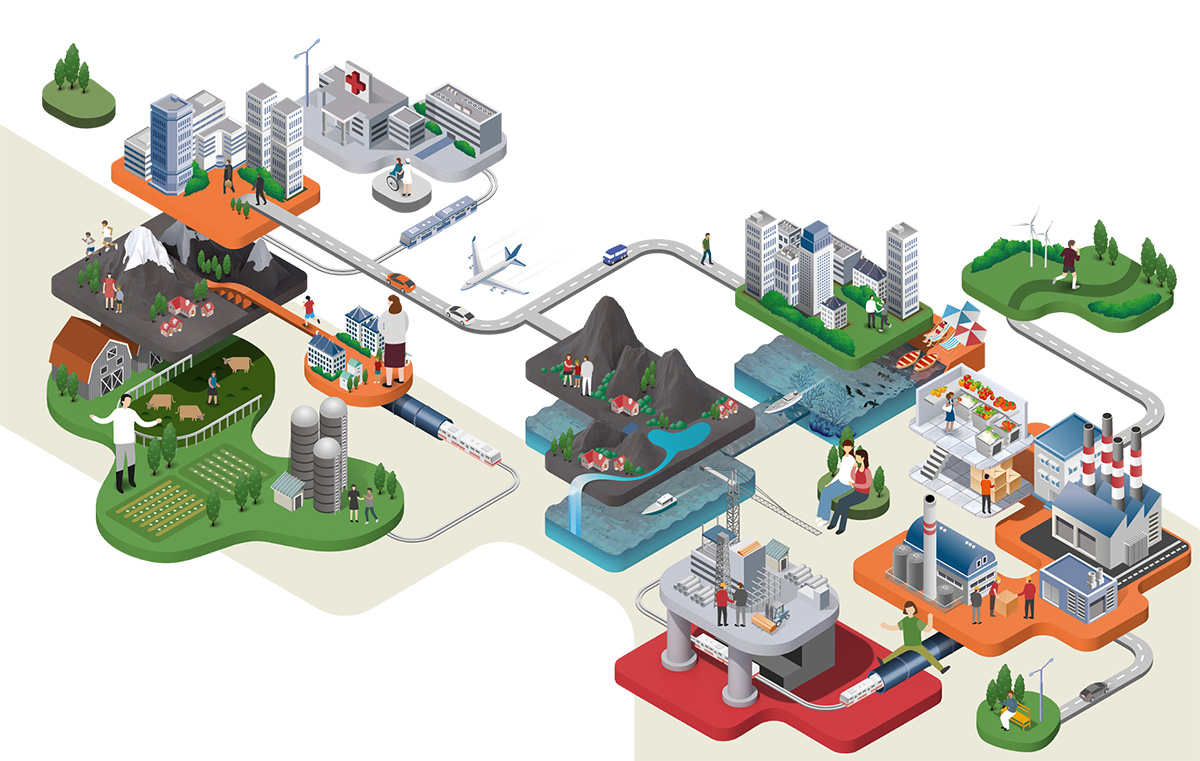
Exploded isometric drawings are useful for revealing parts of a product that might be hidden or internal. They're used by architects, engineers and production designers the world over to better explain the intricacies of a design. To create an exploded isometric, y'all demand to know the detailed inner workings of whatever yous are drawing, so they're are ordinarily used at the final design stage for presentations to clients.
Isometric drawing examples
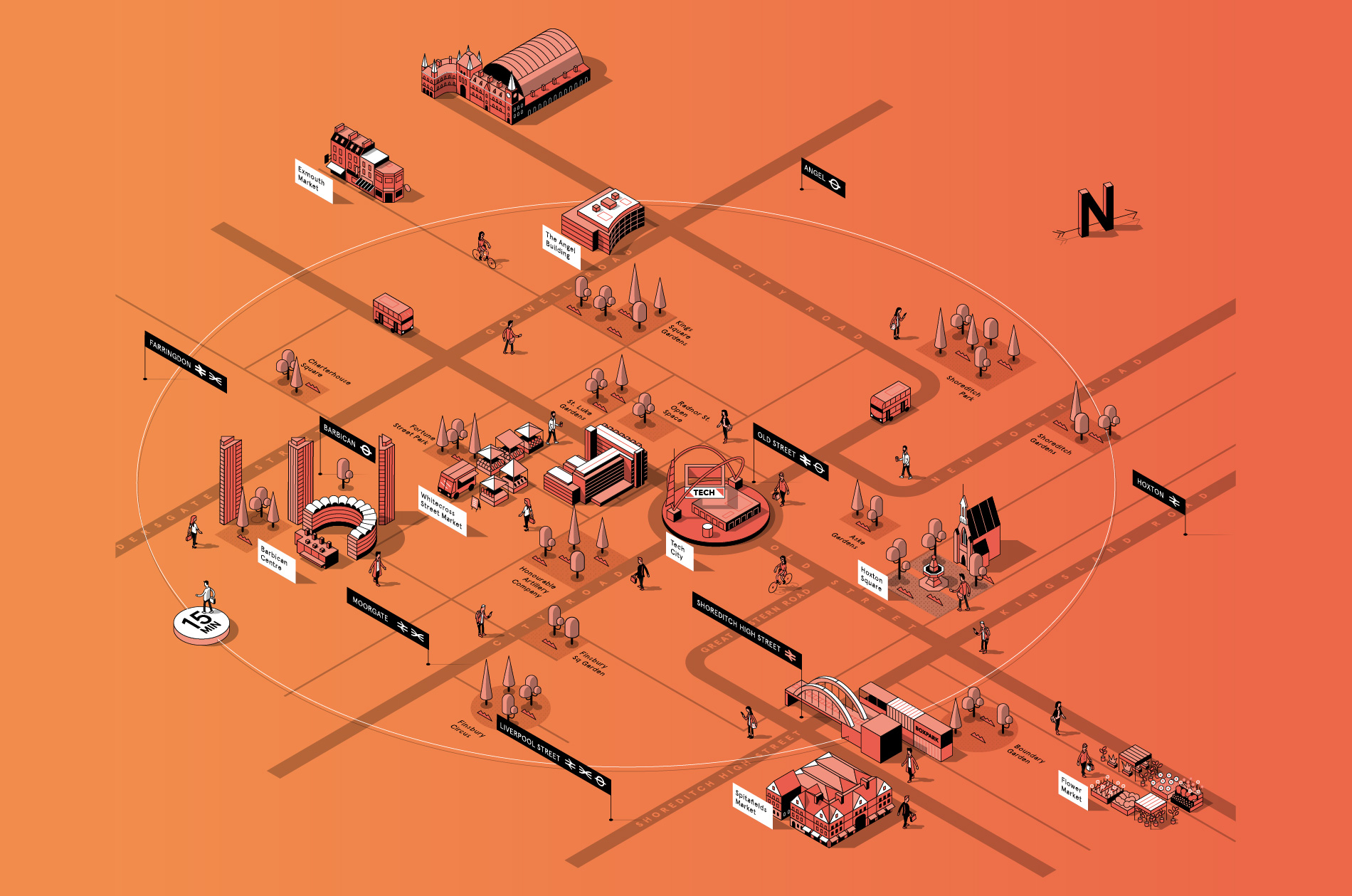
Illustrator and fine art managing director Mauco created this isometric map to represent the areas surrounding the SPECTRUM edifice in London. It shows just the master roads and landmarks to help people orientate themselves.

Jing Zhang is an illustrator working mainly with clients in the advert manufacture. She'southward built a particular reputation for her detailed exploded isometric designs, including this creation for Slack. It's office of a series to back-trail the make'south stories, focusing on elements such as a happy mobile workforce (above).
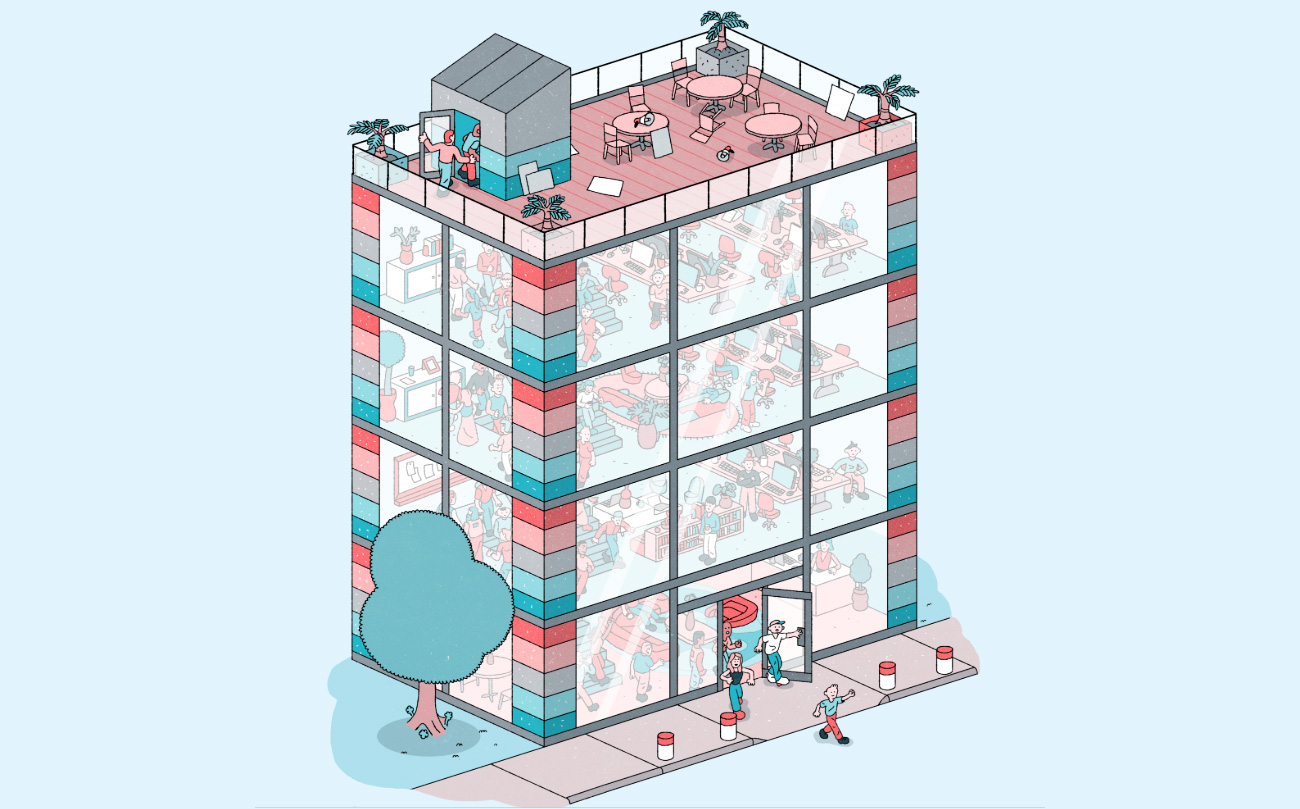
This pattern was created for an article in the The California Sunday Magazine, entitled The Tech Revolt and exploring political activism in the tech manufacture. In it, illustrator Tim Peacock uses isometric projection as a way of revealing the inner workings of a Silicon Valley part block.
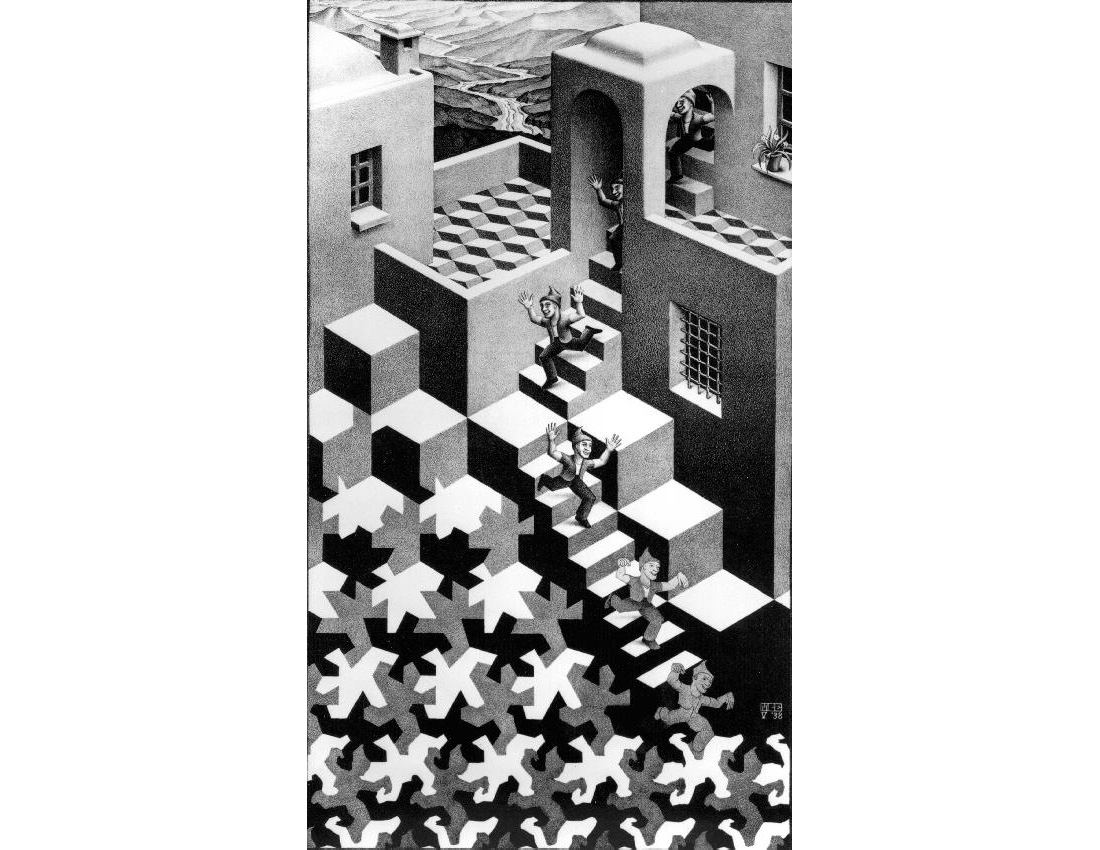
MC Escher was possibly the king of using isometric projections in his artworks. His use of parallel geometries to depict mind-angle staircases that go nowhere will exist familiar to nearly. In Cycle (1938), is information technology clear how isometric project comes into his work, from the blueprint on the ground to the utilise of cubes that plough into steps.
Read more:
- Pencil drawing techniques: Pro tips to acuminate your skills
- Incredibly realistic pencil drawings
- Sketching tips: Hone your skills
Related articles
Source: https://www.creativebloq.com/features/isometric-drawing
Postar um comentário for "How to Draw Isometric From Plan and Elevation"